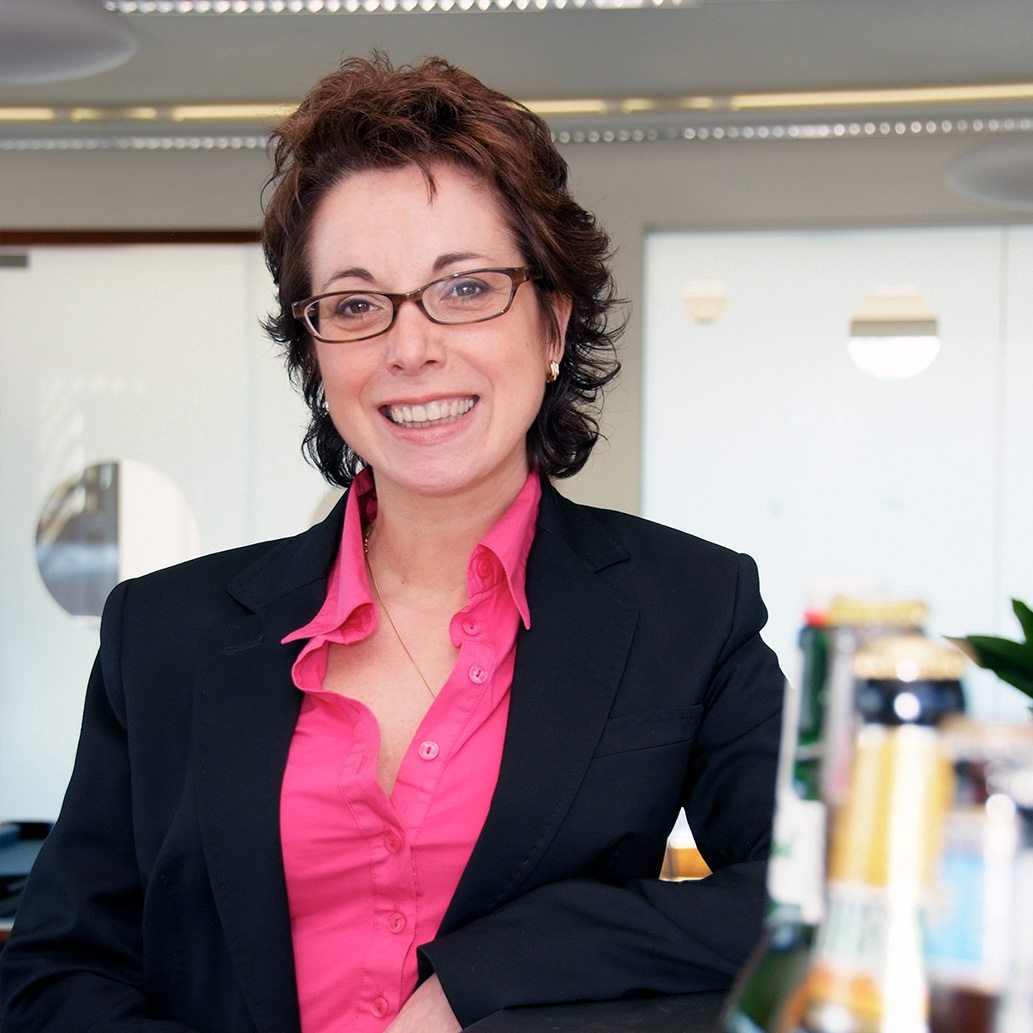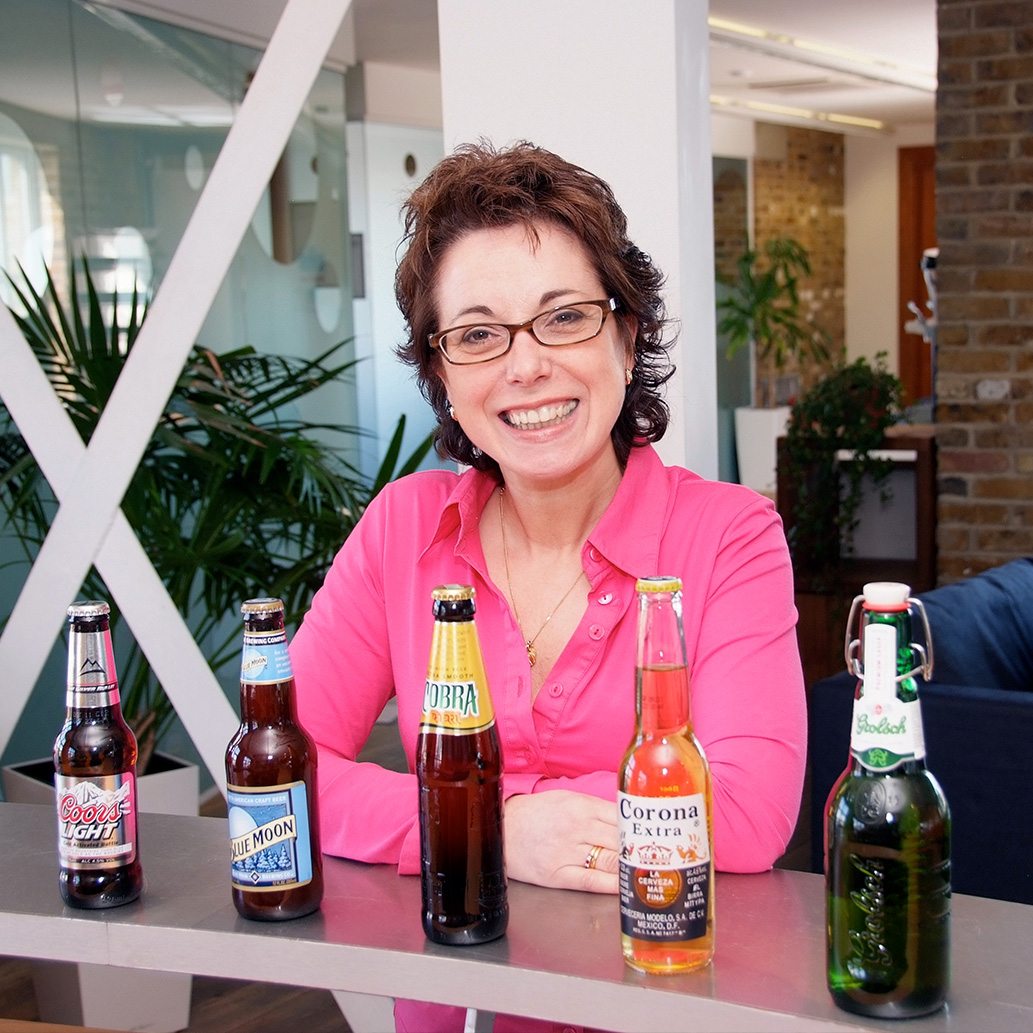Tracey, give us an idea of your early career and what it was about HR that attracted you?
Well I really didn’t know what career path to take, I had an open mind and I made the decision to keep my options open. I had the opportunity to do a PHD on neuro-psychopharmacology, but decided it would somewhat narrow my options, so I went to the other extreme and got offers in chartered accountancy, before accepting a graduate trainee general management position at Yorkshire Electricity. I got a great grounding across the company, and I had a terrific opportunity to work alongside the Board Secretary, who had been seconded to the HR Director, on key projects, and it was a fantastic year. I then got a job with ICI as Head of Learning and Development in one of their business units in Cheshire, and I was also a member of the Group’s corporate management development centre, delivering training and development to over 30,000 people, across a multitude of disciplines. My business unit was sold three years later and I moved to a role of Head of People Change, for the new organisation re-named Brunner Mond. This was the early 1990s, and the economic climate was tough. The business was in a competitive market and our costs were out of line. The buyout was highly leveraged and the new owners wanted to see fast returns. It wasn’t easy, but the culture of ICI was fantastic, smart decent people, and this carried to the new organisation. I led on people change aspects of the re-engineering programme which quickly launched.

You rapidly went from learning the ropes, to being at the helm of a rapidly changing organisation. What were the really big issues and challenges?
One of the main challenges was that many people thought they were still working for ICI. It sounds bizarre but the business had been there for 160 years and had generations of employees. Brunner and Mond were the founders of ICI and, despite significant communication, some people could not accept that we weren’t still part of the ICI empire. The challenge was to help people understand that the business needed to change, as we couldn’t operate at the same level of expense. We had to build from the foundations, untying ourselves from what had been centralised provision of many services. On the people front, we introduced single status terms and conditions including family healthcare for all. This was part of a significant change package which introduced annualised hours, removed overtime and involved new bonus schemes. We had inherited something of a poison pill from ICI. We were committed to honour a guaranteed pay rise in exchange for multi-skilling, ICI’s intention had been to reduce demarcations. For example, an electrician who was called out in the middle of the night to mend a pump would historically have a fitter with them rather than undoing their own bolts. We couldn’t afford the pay increase without delivering commensurate returns, and the multi-skill training we implemented worked. Not only did we achieve significant cost savings, we created a culture in which people were proud of the new skills they’d acquired. We trained our best crafts people to train others to a consistent standard and won both Regional and National Training Awards. The day I took a team of trainers to collect the National Training Award was one of my best at work. We built a lot of pride in the organisation, and the importance of pride, in fuelling organisational success, has been one of my key learnings.

It sounds like it was on a grand scale as well, how did you ensure you were on message?
We did a lot of communication, including face to face with every employee. We worked around the shifts, including at night, running communication sessions on changes to pensions and bonus schemes. This was needed to effectively manage change, explaining not just ‘what’ but ‘why’. There were also well hidden issues with numeracy and literacy in our workforce so ‘face to face’ communication was important.

You took a post at Scottish Provident, with I guess, no experience of the finance sector. What was your immediate thoughts about the business?
There was massive change in the sector. I met Barry Rose, UK Chief Executive, in Edinburgh and I immediately liked him and quickly decided to take the job and moved home to Scotland. My experience of financial services was zero, but I have ended up spending the majority of my career in that sector so far. It surprised me that the business was ten years behind the manufacturing sector. The competition wasn’t even part of the conversation, very different from my days in Brunner Mond. It was a “steady-as-you-go” business at that time; indistinguishable from many other financial service companies, but its greatest asset was its people. Technically, from a financial capability point of view, we had a good reputation with our customers. But as is often the case, the business strategy was not clearly defined. Putting that strategy in place was a critical turning point.
We had less than a five percent share in our three markets; pensions, investments and protection i.e. life/critical illness insurance. We couldn’t focus on all three markets, so we made the tough but essential decision to specialise in protection insurance. Many said we were mad… the Government was starting to draw back on state pension, demographic predictions were, more people living longer. Many financial service businesses headed for the pensions market. We took apart all aspects of the business – products, processes, systems and culture, and five years later, we had 30 percent of the market. It was a great turnaround experience, however, it was also bittersweet. As a mutual, owned by its policyholders, Scottish Provident decided that it was in the best interests of policyholders to sell the business. It was sold to Abbey plc. Then started the second chapter of my life, in financial services.
De ja vu?
It took about a year for the business to demutualise. During that time, I went on a ‘Top Dog’ study tour to US companies hosted by ‘What If?’, the UK based innovation company. This turned out to be something of an epiphany, a big milestone in my life. With me on the trip was the Marketing Director of Scottish Provident, David Robinson. We visited iconic companies like SouthWest Airlines, IDEO, NASA and even Enron – now that was interesting. Many of the improvements made at Scottish Provident were features of the companies we visited. However, there were lots that weren’t and it stimulated our appetites.
On the return journey, we got stuck at Heathrow airport for four hours, on a Sunday morning. As we sat there, we decided that we wanted to set up a new insurance business. We pulled out a sheet of paper, and sat there with a list of things we would do. We came back and developed a business case that eventually became Bright Grey, funded by Royal London Group. We were crystal clear that we wanted to build an insurance company that did the right thing for customers, and we were also crystal clear that this meant recruiting the right people, and we were ruthless about the culture of the business we were going to build. So, armed with our experience at Scottish Provident, and stimulus from the study tour, we set up a founding team of six fantastic people, and started our journey.
I wrote the first advert for around 20 managers. It said ‘”Do you believe that a group of people who believe in something and love working together can create something special? We do! “We had over 500 applications so spent a lot of time sifting and interviewing in our first months. We recruited for attitude, three key attitudes for everyone in the business, and this became the bedrock of the culture. You can train for skill but you must recruit for attitude. This proved to be a significant reason why the business has succeeded, particularly in its service to customers.
You launched Bright Grey in 2001, a year that shook the world, and cast a massive and dark shadow over the world of insurance.
Yes, 9/11 happened in our second week in business. And,like everyone, in a state of deep shock, we just solemnly and resolutely got on with the job of building our fledgling business. Bright Grey launched, we had teething problems with systems, but the business grew and grew. As Deputy CEO, I was managing Customer Services,amongst other functions, and it was a tough learning ground. HR has had to change much of what was wrong in the financial sector. And, as it transpired,Gordon Gecko was proved wrong about greed being good. Bright Grey was part of the Royal London Group. In 2007, I joined the Royal London Executive as HR & Corporate Affairs Director. Banking, in particular, was being heavily scrutinised by the FSA. My viewpoint, as HR Director, is that governance and controls are vital. It’s important to reward people, for doing the right things, and I mentioned earlier that I visited Enron, I think there you could see it coming. The building was so magnificently opulent, the largest marble table, inch deep carpets. I should point out that this wasn’t a feature of all companies in the financial sector and not my personal experience of Royal London, which like Scottish Provident is a mutual. However, risk management and reward got out of balance in some companies, with serious outcomes.
So is money an unreliable reward...what do you think really engages people now, particularly younger people?
Remuneration definitely plays a part in attraction and engagement. But in my view, what’s important is the type of people you attract. This depends on what your business stands for, both internally and externally, regardless of sector. Having a culture in which people feel engaged, in worthwhile and meaningful work, is critical to providing great service and products. That’s the type of organisations I like to build and the kind I want my children to join in the future.
Looking back 20 years, a graduate’s aim was to get a good job with a blue chip organisation and climb the greasy pole as fast as possible. That’s changed immeasurably. There are some graduates that want to make lots of money in an entrepreneurial way, and that’s great. We need innovation in this country. But I also see lots of young people wanting to do something that makes a difference in the world, and I’m really encouraged by that.
Tell me how you heard about your current role at Molson Coors?
I was introduced to Mark Hunter,Molson Coors’ CEO in the UK & Ireland, by a mutual friend. We met up at the Balmoral Bar in Edinburgh. I knew we were like-minded after the first half an hour. I was really interested in the business, especially that Molson Coors had a big ambition to be the fourth largest brewer in the world. I like businesses with big ambitions, they give headroom for people to aspire and to achieve big things. Mark was looking for an HR Director and asked me to consider the post. He invited me to meet with the rest of the Board in the UK and I liked them, lock, stock and barrel. I was offered the role and Mark was very accommodating with me working flexibly, so that I didn’t have to uproot my family.
What did they want from HR?
They wanted someone who would support the purpose and ambitions they were setting for the business. They’d spent considerable thought on the key ingredients needed to achieve these and wrapped them up in a framework called ‘Our Brew’ and this has given a common language across the globe. Mark is a great communicator and being a leader in engagement is something he takes very seriously.
We have metrics for people engagement and talent development, a couple of years ago, we were at 75 percent engagement and set ourselves a target to get to 85 percent. In 2010, we hit 89 percent in the UK putting us in the top decile amongst high performing companies in the world. We also measure talent and succession in a very focused way. From manager-level onwards, people have to have two successors for their job, one to be ready in six months and the other in 24 months. In 2010, we were at 23 percent, across the globe against a target of 80 percent by the end of 2012, so you see the size of the challenge. Peter Swinburn, the Group CEO hasn’t changed the target. He sees it as key that we put pressure on ourselves to achieve it.
If you had a whiteboard how would you show that?
Take talent first. Every six months, we review where we are in terms of our talent stock. We have a common, global language around talent, and we talent rate, formally, twice a year. Those conversations take place from top to bottom, with business units and functions agreeing successors for roles and measuring against the targets I mentioned earlier. All of our people have detailed Personal Development Plans, which are reviewed every six months, and we audit the quality of these plans. It’s about hardwiring talent management and development across our organisation.
We want to see that people and their line managers have carefully thought through how they will develop and it’s not just about moving upwards. If somebody doesn’t want to move up the leadership ladder, but wants to be more expert at what they do now, that’s fine. If they want to move into a different function, and have the potential, we will support them. HR’s role is to help them achieve it.
In a big organisation, what’s the best way to find out what people really think and how they tick?
It sounds clichéd, but communicate. Talk to people about what they’re interested in, what they enjoy and don’t enjoy about their work. Ask them what they’re good at. You can have all the systems and metrics in the world, but there is still no substitute for talking to people. Ultimately, it’s pointless to end up with people who are skilled, but not interested in what they do. It’s a recipe for disaster. Fundamentally,companies do best when people believe their work is worthwhile. They perform at their best,are engaged and proud.
Easier said than done!
If you recruit the right people into the right jobs, it’s not as difficult as it sounds. If I talk to the people in our breweries, they’re phenomenally proud of brewing beer that people like to drink. When I talk to people that work in marketing they want to create the most innovative products and brand them in the most exciting ways, attracting customers and new beer drinkers. To help build that buzz, the result of real engagement and interest, is what attracted me to HR in the first place. If you could bottle that, it would be something else.
Some people are questioning whether HR has had its day in business.
HR is the business, because people are the business. People talk about HR being a ‘business partner’, yet you rarely hear people calling Finance or Marketing a business partner. I don’t think that label helps HR to be seen as an equivalent contributor. The purpose of HR has changed considerably. Once upon a time, it would have managed the payroll or similar… that’s not my definition. It’s about building the capability and culture to deliver the organisation’s purpose and goals.
So what’s left to be done?
There’s lots left to be done, because Molson Coors has such strong ambition. A pipeline of great beers means having a pipeline of great people.
But the sector is under massive pressure. Pubs are shutting every day across the country.
It is true to say that the beer market has shrunk over the last 20 years, and that space has been taken by wine and cider, in particular. Our aim is to create highly attractive brands and innovate new products. The only way the category will grow is if we make beer attractive to more drinkers. A big challenge is the female market in the UK and that’s a wide open area in which to innovate a great challenge.
Does HR really still get you out of bed in the morning?
Without doubt. I regularly visit best-in-class companies in several markets, particularly as I have a global role to ensure market-leading innovation and brand-building capability in Molson Coors. This year I’ll visit more than ten companies. The common denominator is what those companies do about people. They recruit for attitude, train for skill and relentlessly communicate about what’s most important. They build their people processes with a unique fit, each supporting the other. And they do all of that better than any of their competitors. I use my role to be at the heart of what companies are trying to achieve.That’s something to get up for in the morning!












